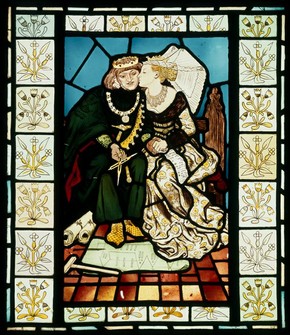IMPORTANT DESIGN STYLES OF THE 19TH CENTURY BRITAIN ……….
Juan Berbesi. (2010). arts and crafts the cradle of modernism in England.wmv. [Online Video]. 05 December. Available from: http://www.youtube.com/watch?v=6VsRgyyh0TQ.
[Accessed: 12 October 2013]
The "ARTS AND CRAFTS MOVEMENT" Style
This style, also
known as Mission Style, was developed in the 1860s, when Morris, Ruskin and the
other architects and designers involved in their Movement, were fighting
against the fast-growing industrialisation that was killing the
craftsmanship. As I already mentioned,
they gave a lot of importance to the enjoyment of creating products, and their
principles connected to the making of the objects were revealed in the
appearance of the style. By the end of the 19th century, the design
and manufacture of all the decorative arts in Britain, were affected by the important principles of the Arts and
Crafts Movement, and they had the following characteristics:
- Truth to Materials – the materials used had to retain their natural qualities.
- Simple Forms – the forms showed simplicity with no fuss in the decoration – that way one could often appreciate the actual construction of the item.
- Natural Motifs – the love towards the flora and fauna of the British countryside inspired the artists/designers to produce natural patterns.
- The Vernacular – the Movement wanted to bring back to life the old techniques and domestic traditions of the British countryside. In fact, they set up workshops in rural areas to get more inspiration for their work.
The "GOTHIC REVIVAL" Style
This was one of the
most powerful styles in the 19th century - the forms and patterns used in the Middle Ages (12th to 16th centuries) were
revived! However, the Medieval designs
produced during this era, looked more fantastical and romantic than those of
the Middle Ages. This style increased in
popularity between 1830 and 1900. All
sorts of buildings - religious (for example Salisbury Cathedral), public or
household buildings – were built and furnished in the Gothic Revival Style,
with the following characteristics:
- Architectural elements - pointed arches, steep-sloping roofs and decorative ornamental openwork patterns.
- Painted furniture – highly detailed scenes were painted on furniture.
- Heraldic motifs – interest in the Medieval knightly system made the designers produce motifs found in coats of arms.
- Medieval clothing – historical costumes dressed during fancy dress parties and events, especially in styles of the Middle Ages, were very popular in the 19th century.
- Gothic script – products often had inscriptions in Gothic style on their designs.
Taran Tula. (2013). 1/4 People's Palaces: The Gothic Revival. [Online Video]. 18 September.
Available from: http://www.youtube.com/watch?v=Sg9e-KAyLmg.
[Accessed: 12 October 2013]
Taran Tula. (2013). 2/4 People's Palaces: The Gothic Revival. [Online Video]. 18 September.
[Accessed: 12 October 2013]
Taran Tula. (2013). 3/4 People's Palaces: The Gothic Revival. [Online Video]. 18 September.
[Accessed: 12 October 2013]
Taran Tula. (2013). 4/4 People's Palaces: The Gothic Revival. [Online Video]. 18 September.
[Accessed: 12 October 2013]
Panel, King René's Honeymoon, Ford Madox Brown (about 1863)
Museum no. CIRC.516-1953
Museum no. CIRC.516-1953

V&A, (2013), Panel, King René's Honeymoon, Ford Madox Brown, about 1863. Museum no. CIRC.516-1953 [ONLINE]. Available at: http://www.vam.ac.uk/content/articles/s/style-guide-gothic-revival/
[Accessed 12 October 13]
A modern designer inspired by the Arts and Crafts Style
The image below shows a model wearing an outfit designed by Anna Sui who was inspired by the Arts and Crafts Style. This design is included in her Fall 2010 collection:
Blogger. 2010. The 21st Century Stunner pre-raphaelite style for modern persons. [ONLINE]
Other References:
V&A. 2013. Style Guide: Arts & Crafts. [ONLINE]
[Accessed 12 October 13]
Book: Fiell, C.F and P.F, 1999. Design of the 20th Century. 2nd ed. Germany: Taschen

No comments:
Post a Comment